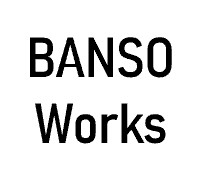What is Japanese "Ishiki Awase (意識合わせ)" ""Ninshiki Awase (認識合わせ)?

In the realm of Japanese business culture, the term "ishiki awase" (意識合わせ) or "Ninshiki awase(認識合わせ)"holds significant importance. Translating roughly to "aligning consciousness" or "aligning awareness," ishiki awase is a concept that emphasizes the harmonization(和) of thoughts, intentions, and objectives within a team or organization. It is a fundamental practice in Japanese workplaces that ensures everyone is on the same page, fostering a collaborative and unified environment.
Understanding Ishiki Awase
Ishiki awase goes beyond simple agreement or consensus. It involves a deep alignment of values, goals, and perceptions among all members of a team. This alignment is achieved through open communication, mutual understanding, and continuous feedback. The process of ishiki awase can be seen in various business activities, such as meetings, project planning, and daily interactions.
My Case

In my case, as a Japanese person, my boss often asks me to set up meetings to align our consciousness. I arrange meetings with senior management for this purpose. In Japan, aligning consciousness (ishiki awase) is almost a necessary custom before making any decisions. If you suddenly push for a decision from senior management without aligning consciousness first, it can be considered rude.In the era of 2024, this custom seems out of date but still existing.
Key Components of Ishiki Awase
Communication (コミュニケーション)
Effective communication is the cornerstone of ishiki awase. Regular discussions, both formal and informal, help team members understand each other's perspectives and ensure that everyone is aware of the group's objectives and strategies.
Transparency (透明性)
Transparency in sharing information, decisions, and changes is crucial. When team members are fully informed, they can better align their actions and decisions with the collective goals.
Feedback (フィードバック)
Continuous feedback loops are essential for maintaining alignment. Constructive feedback helps individuals and teams adjust their actions and behaviors to stay in sync with the overall objectives.
Shared Goals (共有目標)
Establishing and clearly communicating shared goals ensures that everyone is working towards the same end. This collective focus strengthens team cohesion and drives coordinated efforts.
The Importance of Ishiki Awase in Japanese Business

Enhanced Team Cohesion (チームの結束力向上)
Ishiki awase promotes a sense of unity and togetherness within a team. When everyone is aligned, there is less friction and more collaboration, leading to a more cohesive and productive work environment.
Improved Decision-Making (意思決定の改善)
With aligned consciousness, decision-making becomes more efficient and effective. Team members can anticipate each other's needs and perspectives, leading to more informed and timely decisions.
Increased Efficiency (効率の向上)
When goals, expectations, and actions are aligned, tasks are completed more smoothly and with fewer misunderstandings. This alignment reduces redundancy and increases overall efficiency.
Better Conflict Resolution (コンフリクト解決の改善)
Ishiki awase helps in preempting and resolving conflicts. By fostering a culture of open communication and mutual respect, potential disagreements can be addressed early and constructively.
Practicing Ishiki Awase
To successfully implement ishiki awase in a team or organization, consider the following steps:
Regular Meetings (定期会議)
Hold regular meetings to discuss progress, share updates, and address any misalignments. These meetings should be open forums for all members to voice their thoughts and concerns.
Clear Communication Channels (明確なコミュニケーションチャネル)
Establish clear and effective communication channels. Use these channels to disseminate information, provide updates, and encourage feedback.
Shared Vision and Values (共有ビジョンと価値観)
Develop and communicate a shared vision and set of values that guide the team's actions and decisions. This shared foundation helps in aligning individual efforts with collective goals.
Inclusive Decision-Making (包括的な意思決定)
Involve team members in decision-making processes. Encourage participation and ensure that everyone’s voice is heard and considered.
Conclusion
In conclusion, ishiki awase is a vital practice in Japanese business culture that fosters alignment, collaboration, and efficiency. By understanding and implementing this concept, organizations can create a harmonious and productive work environment where every member is fully engaged and aligned with the collective goals.
Writer and Editor: Lio, Japanese career consultant

Lio is a nationally licensed career consultant in Japan. He holds the Level 1 SEO Certification and is a certified web analyst. Born in Japan, he has lived in four countries, gaining an understanding of various cultures while being well-versed in Japan's unique work culture and language. With 25 years of experience in HR at both Japanese and multinational companies, he leverages his expertise to support individuals seeking to work in Japan




